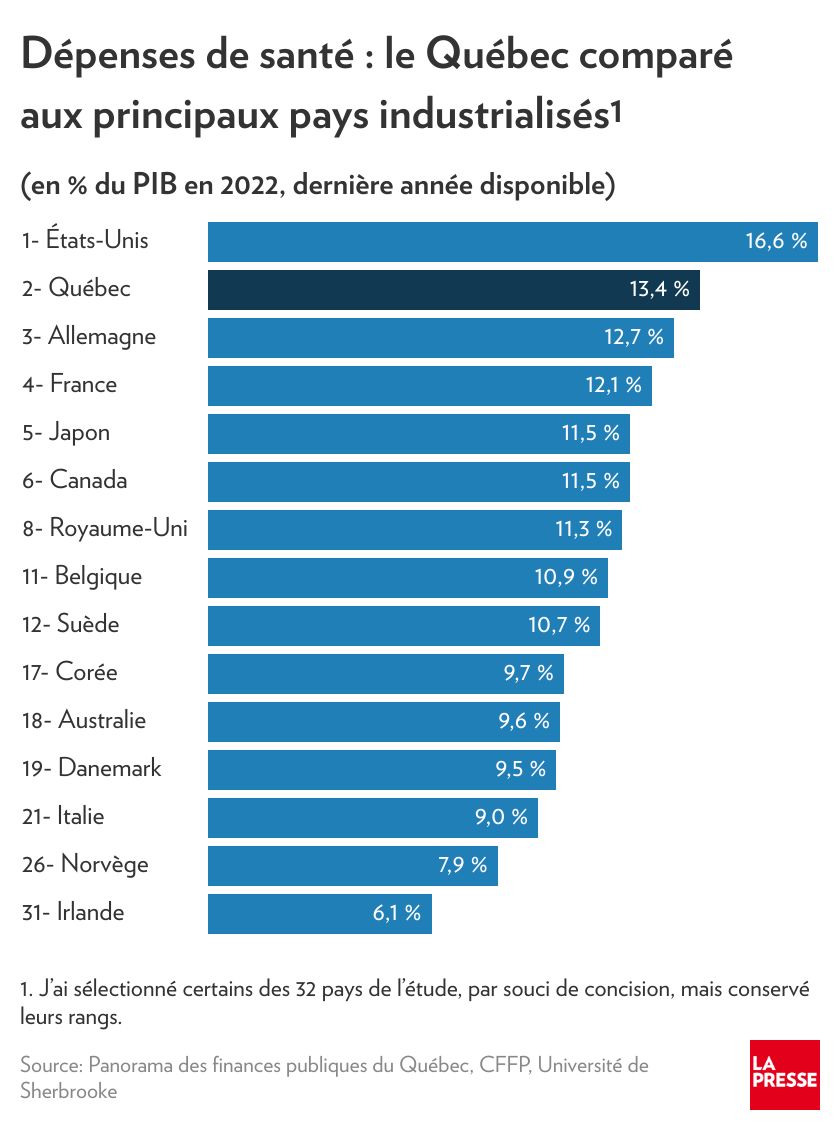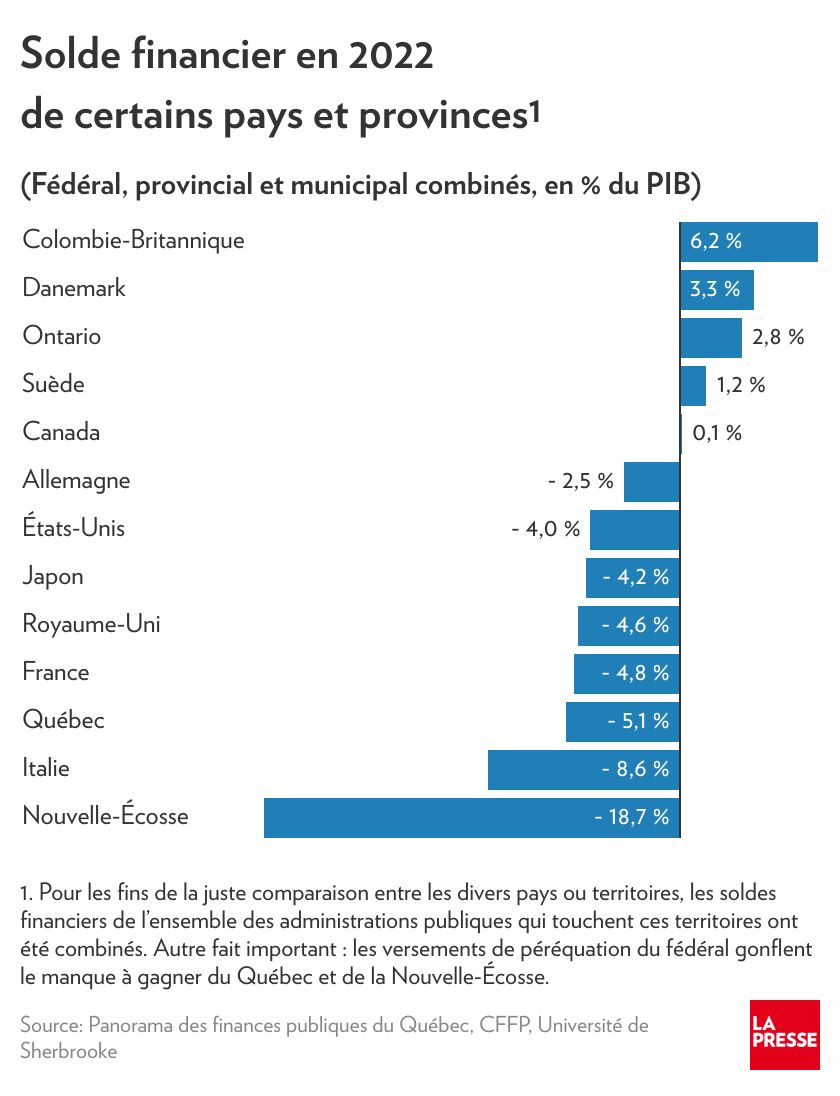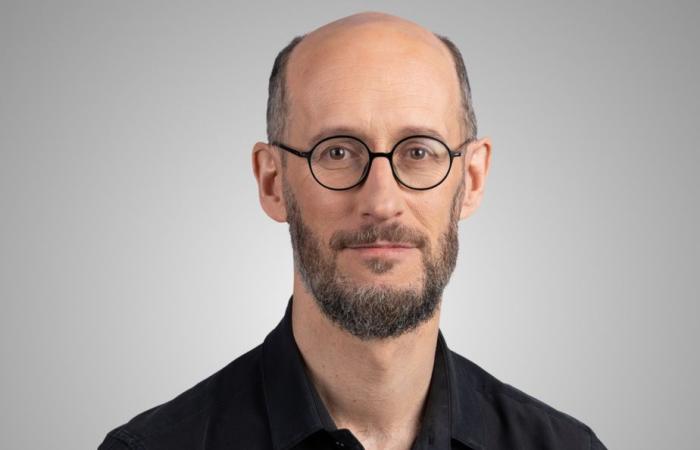Our health and education networks are in poor condition, we often hear, and those who are in trouble are abandoned by the system. So we need to invest a lot to rebuild our social safety net, some say.
Posted at 1:40 a.m.
Updated at 6:30 a.m.
I agree, the situation is not always rosy, whether we think of the lack of housing or too many homeless people, for example. But to what extent would Quebec underinvest in its services? And what are the challenges of the welfare state that Quebec still is?
The new Panorama of Quebec public finances just published by the University of Sherbrooke helps us reframe this debate. The 78-page document makes very interesting historical and international comparisons, courtesy of researchers Michaël Robert-Angers and Frédérick Hallé-Rochon, helped by others, including Luc Godbout, from the Research Chair in Taxation and Public Finance of the University of Sherbrooke1.
First, we see that the spending of our governments (provincial, federal, municipal) in Quebec reaches 51% of annual economic activity, measured by the Gross Domestic Product (GDP). Governments therefore represent half of the economy… still!
This proportion of 51% of the GDP reaches 7e world rank in 2022 – latest year available – behind France (58.8%) and Finland (53.4%), among others, but ahead of Sweden (47.7%) and Germany (49.6%) ).
In other words, the collective effort required of taxpayers to finance these expenses could hardly be much greater, especially since the proportion is only 41% of GDP for Canada as a whole and 39.1% in the United States, which is our main competitor.2.
“To those who say that the State is not doing enough, perhaps we should look at our spending choices or even the effectiveness of our spending,” says Luc Godbout, professor at the University of Sherbrooke.
Quebecers have access to more services, that’s true. CEGEPs are practically free and university tuition fees are much lower than elsewhere. Added to this are daycares at reduced rates, in addition to advantageous automobile and drug insurance, among other things, and low Hydro-Québec rates.
Second in the world for health spending
This massive commitment by the State is also reflected in the health and education system, whatever one thinks of it.
If Quebec were a country, it would even reach 2e rank among industrialized countries for health spending! Quebecers devoted 13.4% of their GDP to it in 2022, and the public-private distribution of this spending was 73%-27%.
Certainly, the inflationary context and the end of the pandemic in 2022 have increased this relative level of spending, but still, other countries were experiencing the same thing, and the comparisons remain valid.
The country at the top of these expenses – and by far – is its American neighbor (16.6% of its GDP). France is at 12.5% of its GDP, Canada at 11.5% and Sweden at 10.7%.
PHOTO ALAIN ROBERGE, LA PRESSE ARCHIVES
Office of the Quebec Health Insurance Board
On the provincial scale, Quebec comes in at 1is rank of the four major provinces.
This indicator, I must remind you, measures the effort we devote to health in proportion to our collective wealth. This relative effort would decrease if our economy were more vigorous and more productive or, in other words, if our GDP – in the denominator of the equation – were greater.
This explains, among other things, why Alberta is at only 8.4% of its GDP compared to 13.4% for Quebec: this province is significantly richer than ours and can therefore devote a smaller share of its wealth to health to achieve the same ends. Alberta’s population is also younger, it must be said, which is less costly for the system than our aging population.
Three maritime provinces, poorer than Quebec, spend more on health, as a proportion of their GDP. Nova Scotia is the biggest spender, at 17.1% of its GDP.
Oh, I forgot: health absorbs 42% of the Quebec government’s portfolio spending this year, compared to 37% in 2000.

Health is not the only sector where Quebec spends relatively a lot. If Quebec were a country, it would arrive at 7e rank among the thirty countries listed for spending on primary-secondary education, at 4.1% of its GDP. The most recent figures this time date from 2020.
Little Iceland is at the top, at 5% of its GDP, but Finland, often cited as an example, spends less than Quebec in proportion to its relative wealth, i.e. 3.8% of its GDP.
Note that in Quebec, 93% of education spending is public, compared to 84% in Australia, 92% in France, 94% in Canada and 100% in Finland and Sweden, according to the study.
As you can see, Quebecers spend a really significant part of their collective wealth on their public services.
Despite the publicized shortcomings, the results are rather there, one could say, although the study only has two results indicators to testify to this.
First, Quebec has a performance significantly higher than the average of the countries analyzed in education, if we rely on the well-known PISA tests. And in health, Quebec has one of the highest life expectancies in the world.
The fact remains that our expenses are very high, the problems are real and our finances are under pressure. According to the study, Quebec even ranks penultimate among the territories compared for its financial balance, at -5.1% of its GDP. Ouch!
This balance, it must be said, reflects the deficits of all public administrations present here (municipal, provincial and federal). Above all, it takes into account payments from the federal government for equalization, which are greater than our tax payments to Ottawa.
Sweden has a positive balance, while the United States, Germany, France, the United Kingdom and Japan are clearly in the red.

In short, given our spending, it is difficult to conclude otherwise: any improvement in our public services must find its source in something other than just money. Looking forward to innovation and consultation!
1. Consult the Panorama of Quebec’s public finances
2. The researchers actually compare Quebec to the main countries of the Organization for Economic Co-operation and Development (OECD), essentially around thirty industrialized countries.





